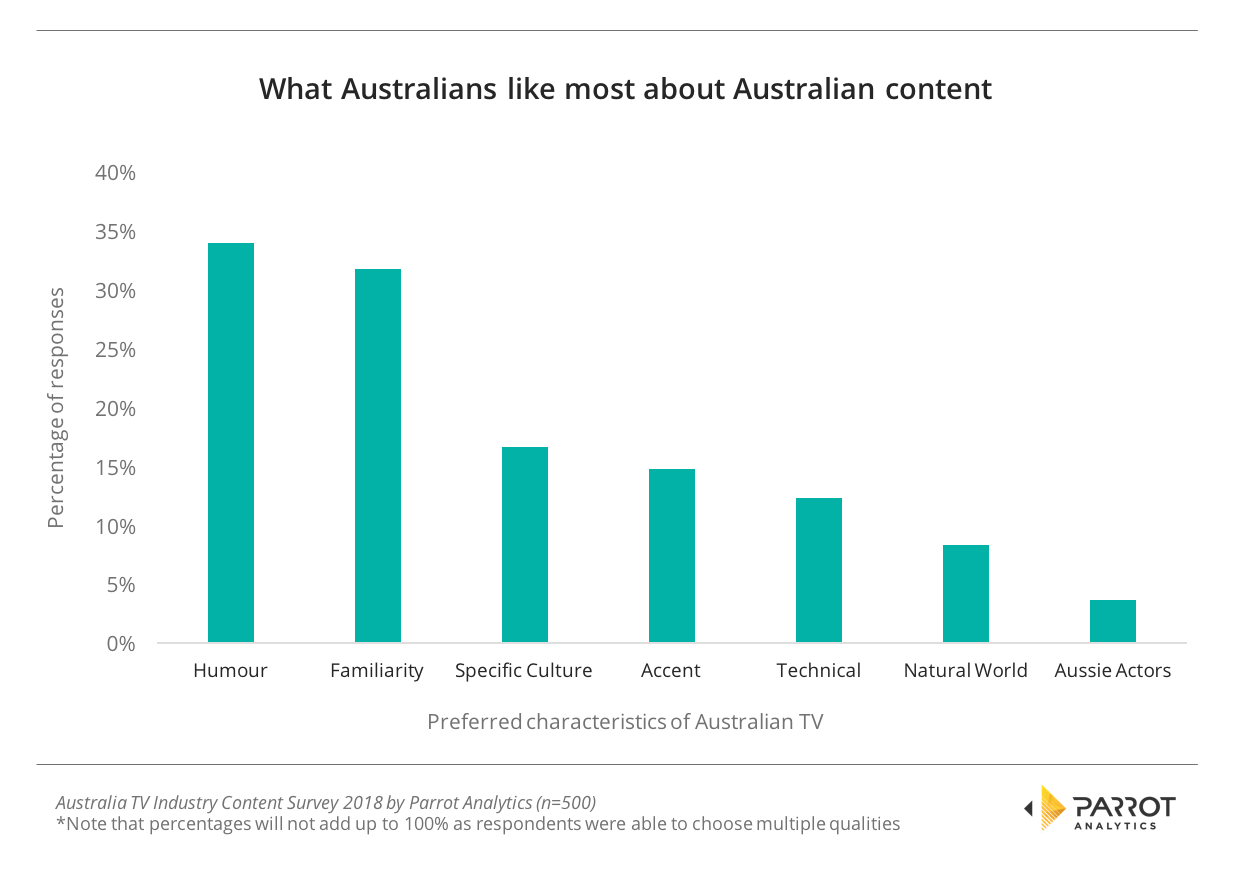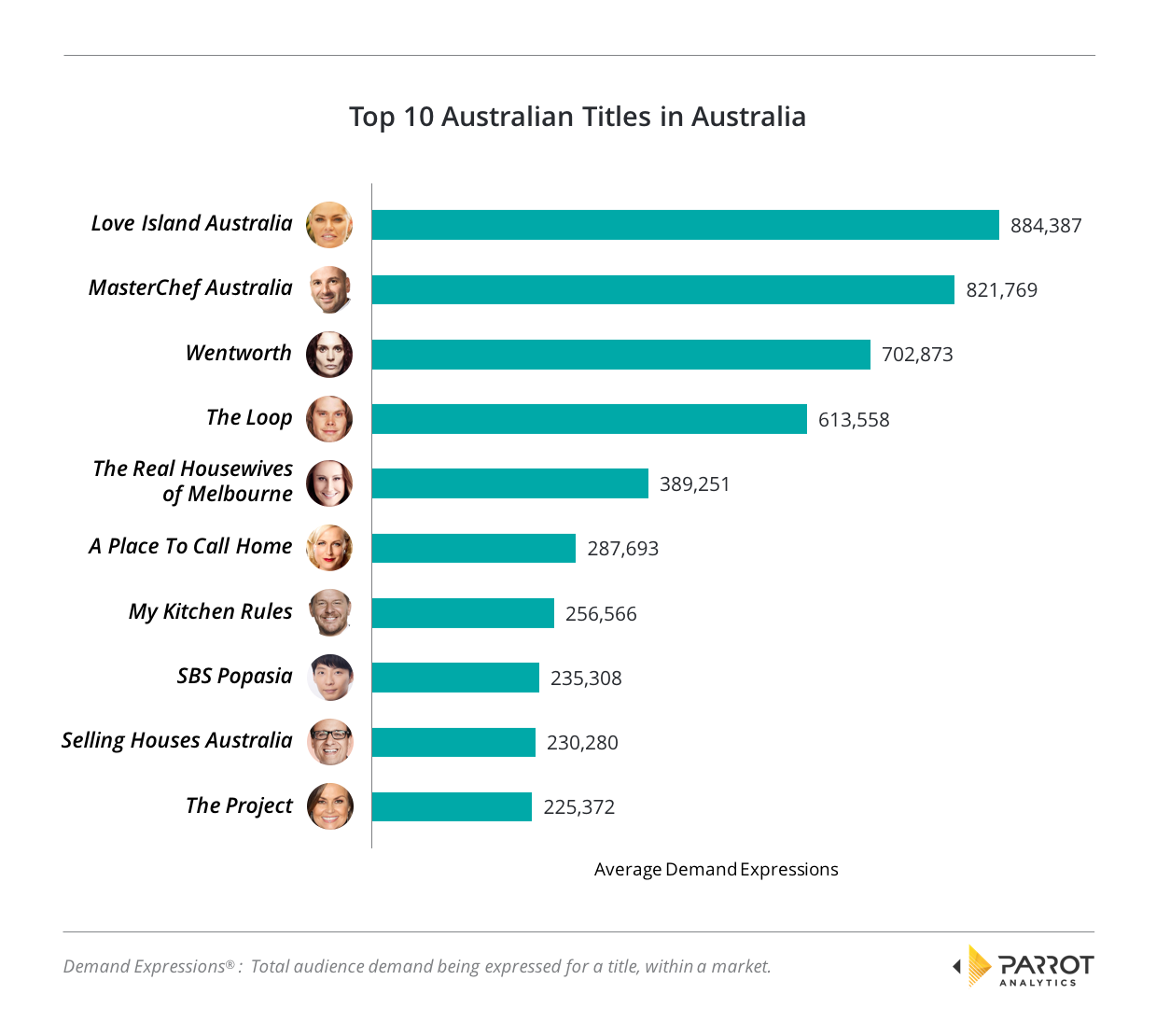Image: Love Island Australia, Nine Network
The globalization of content, driven by new Internet-based distribution methods, has enabled titles from any country in the world to find a global audience. While one may think that the big-budget, prolific content from Hollywood would spread to dominate all markets, globalization has also brought local hits like Spain’s La Casa De Papel to the rest of the world. Local content has more opportunities than ever to grow beyond its home market, and understanding what makes a show “local” to a certain market is now of global interest.
Following on the regional preferences of Spain and Canada, Parrot Analytics turns its attention down under, to Australia. In a recent survey conducted by Parrot Analytics, 500 Australians were asked what qualities of Australian-made TV shows can’t be found overseas.
About 90% of the answers to our open-ended question included the idea that Australian-made television was “relatable” to Australians. This relatability falls into a few specific categories, with humour being the most popular with 34% of answers:
Australian humour is naturally only found in Australian content and was described by respondents as “laconic,” “self-deprecating,” “irreverent,” and “dry wit.” This regional humour is supported by other familiar aspects in Australian content, which includes distinctly local settings, cultures and subcultures, viewpoints, and storylines. The presence of these Australian-specific elements makes content feel “authentic;” this authenticity was second in importance as it had 32% of responses.
In addition to a general familiarity in Australian content, 17% of responses mentioned a specific aspect of Australian culture that they enjoyed most. “Bogans,” the Australian term for someone with an unrefined or unsophisticated appearance, appeared more than once in the responses. Details matter: One respondent liked that characters call 000 rather than the 911 in an emergency, and another mentioned that Australian television has “swearing, instead of guns.”
For 15% of respondents, the Australian accent was an important distinguishing factor. The accent itself along with slang terms, from “bogan” to “mate” to “flaming galah,” were mentioned as a key feature of Australian content. The remaining categories encompassed answers that covered mentions of Australian nature, actors and actresses, and technical aspects, including production values and lack of commercial biases and laugh-tracks. These differentiators from Hollywood content, however small, help mark content as distinctly Australian.
With these qualities in mind, the top Australian content in Australia can be found over the last month, from mid-May to mid-June, by the average Demand Expressions (avg. DEX) over that time period:
Love Island Australia topped the list with 7.6% more popularity than the Australian MasterChef. While Love Island may not have (intentional) humour or an Australian setting, it features Australians – and so the accents, language, and behaviours will be distinct. The original version of Love Island recently was the most popular title in the United Kingdom, so it is no surprise that a local version is also in-demand. Another local spinoff, MasterChef Australia, is second by demand, followed by the first scripted title, Wentworth. The only other scripted drama, A Place to Call Home, ranked 6th.
The prevalence of unscripted series among the top 10 titles indicates that Australians like seeing other Australians on television. With people responding to distinctly Australian humour, culture, and language, it is not too surprising that watching real Australians provides the most authentic experience.
Understanding these types of trends allows local producers to create content that resonates most with this market and enables international buyers to acquire the most distinctly Australian titles that will bring something new to the world.
For more information, check out the most up-to-date Australia television industry overview.



